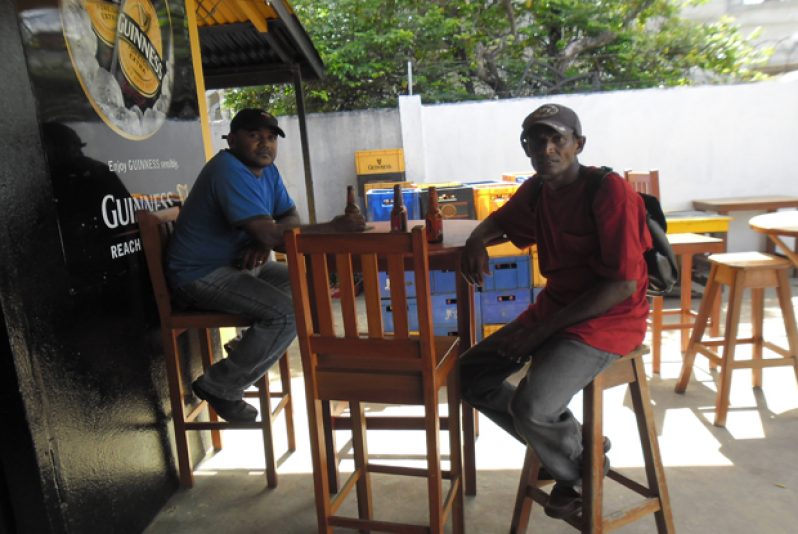GREAT credit should be given to the scenic beauty, historical landmarks, and homely, pleasant inhabitants of some villages which have justly become popular.
Little Abary is no exception, and the reader will soon appreciate the pleasant tidings of this enchantingly quaint and impressive village, nestled snugly between Catherine Ville and San Souci in Mahaicony, on the East Coast of Demerara.Little Abary is the perfect spot for persons who desire a little peace and solitude. It is a small community in the Mahaica-Berbice Region 5 of Guyana, near the mouth of the Abary River, 43 miles from Georgetown. This popular village is deeply connected to the Abary Bridge, just about half-a-mile away on the main highway.
At first glance, one would want to think that Little Abary is just a cluster of houses that has no truck with modernisation. But like they say, ‘never judge a book by its cover’, and we certainly turned the pages to discover the glorifying mysteries of Little Abary. And readers, our findings were quite appealing and not the least bit disturbing.
The Bridge
The approach to the Bridge can prove frightening to local children riding in a car, as the moving vehicle eats up the spiralling, twisting, and winding turns before charging up that bridge.
Even now, at my age, I dread the approach to that bridge, and the experience it brings with it. One moment you are grinding around a very precarious turn in the road, and there is that arresting bridge, looming up at you as if appearing out of nowhere. Then it’s a bump or a significant tug as the car wheels hit the structure.
Sometimes it feels like taking off in an aeroplane and shooting into the centre of the galaxy.
Then there is that ‘whoosh’ sensation you experience as the vehicle negotiates the declivity before levelling out on the West Berbice Highway. Sometimes it feels like your very insides are emptying their contents into the lowest regions of your belly. But, in about a minute or so, it’s all over and done with, and the journey past the bridge continues quite comfortably.
Stopping to chat with residents at the first house, a few males rose questioning eyebrows, but the two females there swinging in hammocks, were all welcoming smiles. One who appeared to be a grandmother mouthed with a toothless grin, “Good aftanoon uncle… wha wrang? How awe can help yuh?
Instantly my soul was at ease, and with responding warmth, I went into detailed explanation of the reason for my visit. Hearing this, the males seemed to get excited and two of them readily smoothed and fixed their apparel, offering to give us the grand tour of the small village.
And there is good reason to visit Little Abary, since this village has, over the years, had its roots snuggled in the mesmerizing foliage and fauna of the lowlands; and then there is the famous Abary trail, which is just a short distance away and is dubbed the ‘tourist masterpeice’ by many villagers.
How I marvelled at the ‘spic and span appearance’ of what appeared to be white-washed surfaces under the houses. Investigations revealed that the earth beneath the houses is actually daubed with a mixture of cow dung, water, and a special type of mud to avoid cracking. When this dries, the appearance of the earth is so inviting, that one might feel lured to lie down and curl up on the surface.
And believe me, when it dries, this mixture has a strangely alluring scent that seemed to inflict a ‘cozy magic’ on the senses.
The Abary Creek Trail
Over the years, the Abary Trail has been quite an inspiring example of ‘the work of nature’ for many local and overseas visitors. Merely 60 kilometres from the capital city of Georgetown, it offers a rare opportunity to see the range-restricted, blood-coloured woodpecker and the crab-hawk, both of which have been badly affected by habitat loss in the coastal region of the Guianas.
The woodpecker is known to live only along a narrow coastal strip which runs eastward for just a few hundred miles from Guyana and finding this species of bird is one of the main reasons for visiting Abary.
Along the trail, one can also look for the little-known White-bellied and White-barred Piculet, as well as the Spotted Tody-Flycatcher, Northern Scrub Flycatcher, and the threatened Great-Billed Seed Finch.
Typical spottings along the shoreline include the Scarlet Ibis, Black Skimmer, Brown Pelican and Magnificent Frigate Bird. The sugarcane fields along the coastal highway are a good place to look for Long-Winged Harriers.
And, depending on tide, it may also be possible to visit a nearby heronry, where Black and Yellow-Crowned Night Herons, Little Blue Herons and Cattle and Snowy Egrets breed alongside Snail Kites.
Mosquitoes can be particularly pesky along the trail, so guests are strongly encouraged to wear long sleeves and carry insect repellent.
Drive-time from Georgetown is 90 minutes; a comfortable pace of exploration along the trail requires about two hours from start to finish, plus an extra hour or two for other stops along the way. It is possible to add a visit to the Mahaica River, or to stop for shorebird sightings while travelling
When our treks and interviews were over in this village, we came to the conclusion that though little, Little Abary is quite a quaint and very attractive village, where residents bask in its quiet existence, enjoy the serene sights of lush open pastures, dense backlands, and natural waterways that gurgle nosily under the scorching tropical sun.
Little Abary can best be described as endearing and quiet, and we thoroughly enjoyed our short stay there. Surprisingly, the streets were almost empty as we explored the village under the scorching rays of the midday sun. Families, mostly wives and daughters, were huddled on benches beneath their houses, while a few giggling girls were daubing their ‘bottom houses’ with a mixture of cattle dung, water and a special kind of mud. They shied away from our camera, but some of the older ladies were ready to talk.
Livelihood…
Little Abary is primarily an East Indian populated village where pleasant and jovial residents reside in perfect harmony. Villagers depend almost entirely on their rice farming and vegetable cultivation for existence.
Their dependence on agricultural produce is evident from the many farms that stretch into the backlands and the kitchen gardens that can be found at almost every home. Even as we drove around the village our tummies rumbled in anticipation at the appetizing aromas of either deep fried or stewed fresh vegetables that bubbled on stoves and ‘cackling firesides’.
Some persons reared poultry which provided eggs and meat for consumption, whilst a few thrived on the rearing and sale of their very healthy cattle. Strangely there is just about two shops or grocery stores in the village and residents mentioned that they would normally journey to the nearby Calcutta Village or travel five miles away to Central Mahaicony to obtain their groceries and household supplies.
At many homes, families were relaxing on their verandas or enjoying spicy midday meals consisting of either meat or fish, and fresh vegetables from their own kitchen gardens. Everyone apparently preferred to relax in the comfort of their homes, as opposed to other villages, where residents could be seen briskly going about their chores.
The village has undergone just a few minor changes over the years, and this comes in the form of a small number of new houses that have sprung up overtime. Many years ago, Little Abary was mostly dense foliage and wide open pastures, with a cluster of houses owned mostly by folks of East Indian descent.
Today, the pastures are rapidly filling up with new buildings, most of which are owned by Afro-Guyanese.
Constraints
Speaking for a group of young men liming in the streets, 19 year-old Pertab Singh noted that there is no scope for academically qualified youths in the village. He said several individuals would normally excel at the CSEC examinations but remains in the village unemployed, or are forced to engage in farming like their parents and grand parents.
Villagers are crying out for the providence of a proper bus shed to await transportation since the makeshift structure erected by some young boys in the village does not shelter users from the scorching sun, or torrential downpours.
The complaining voices of young men in the streets tugged at my heart as they voiced the need for recreational opportunities in the village. Little Abary has no playfield or fun park and residents feel this is much needed, since it would be almost impossible to trek to Central Mahaicony, or other areas to enjoy the luxuries of a well maintained playground with at least considerable necessities.
Some mothers referred to their village as ‘the land that is forgotten’ amidst peals of girlish laughter.
There are no nightclubs or discos in this village and as such, villagers depend on occasional weddings and birthdays parties from the forty plus households to have their fun time.
Ethnic Harmony
All rumours of ethnic differences existing in Little Abary should be treated as nonsense and be crushed under foot. If there is any truth to such tales, that maybe would have existed years ago. We had not properly braced ourselves for the impact of such ‘indulgences of the races’ that it just left us with our jaws open. Affirming the fact again, that one should not listen to ‘hearsay and fabrications’.
The Calcutta Primary School was just closing shop for the day and the noisy chatter of students could be heard from a distance away as they conversed on the ‘happenings of the day’ or on possible methods of effectively completing assignments. And these were school buddies from Little Abary, Recess, Calcutta and Catherine villages.
Of course the bigger girls were giving and getting ‘goo goo eyes’ from some males hot in pursuit, or chomping on chewing gum.
A few school girls ganged up in groups (all mixed races) mouthing the latest gossip in hushed tones for fear of the teachers overhearing.
It was a pleasing ethnic fusion as they spilled into the streets, both Indo and Afro buddies and school chums laughing their heads off at the comical joke of another. They were indeed a picture of what we would want our beautiful Guyana to be.
It was the same pleasant picture with men ‘gaffing’ in the streets, and with housewives catching up on the latest news before hurrying off to their nearby houses. Ever so often, peals of laughter will ring out as they slap each other on the back.
It was so soothing to the soul to see young Onicka Williams who said she journeys from Calcutta Village at least three times per week to chat and have a good laugh with her East Indian girlfriends.
When boarding the mini-buses to get home, it’s a merry bunch of Indo and Afro students all giggling and tumbling over each other. There no angry shouting, or scratching or pulling of hair. Its just pure love and harmony….
Peaceful people
All seemed to be well in this village, and this fact was affirmed by the peaceful solitude of housewives and daughters. The husbands seemed to be missing in most cases, but investigations revealed that they were out in the fields, either tending to their farmlands or cash crops.
That aside, the few males that were at home were either administering repairs to their trucks and farming equipment, or just adding final touches as they swept and cleaned their spacious yards. This village is all about cleanliness, peace and tranquility.
Villagers certainly seemed not too bothered about entertainment, and would listen to music from their radios , or wait for the customary birthday and wedding celebrations. Just a few of the more ‘shine dudes’, as they call themselves, would hook up with their colleagues in Calcutta and Catherine Ville, and hang out at the Blue Dolphin Bar or the Menace Nightclub.
What struck me distinctly was that residents in this village were not the complaining type, and they certainly did not make a big fuss and uproar over the few problems that were afflicting sections of the community.
We entered the village from the west, and the first set of residents mentioned that there were still some drains in dire need of cleaning to ensure good drainage. However, they did mention that it takes continuous torrential downpours for their areas to be flooded.
Speaking to cattle farmer Dankishore Beninadhoo, we learnt that the fishermen who operate from the Abary Sluice “had some problems,” as he chose to put it, so I decided to journey there in the presence of the jolly farmer.
Well, people, I had no idea that the sluice was some two miles away from where I was, until I had covered a quarter of the distance. I learnt a ‘scorching lesson’ that I would never forget.
You see, folks, I had really ‘dressed up’ in my Ricky Martin, long-sleeved jersey, leg-squeezing ‘Tommy Hilfiger’ pants, and one of my very new moccasins, but it was “the wrong bang for me!!” The sun beat down on me mercilessly, and I had unfortunately not walked with an umbrella. My ‘farmer friend’ seemed accustomed to the sunlight, and he just chattered on as I swore, tripped on the stones in some cases, and kept wiping the perspiration that was stinging my eyes.
Then, the ‘belly stitches’ stepped in, and I almost doubled over, except that I had no intention of crumbling in front of this farmer, so I put a ‘plastic smile’ on my face as the sun burnt me to a crisp.
When we arrived at the sluice, I had to rest for a full fifteen minutes, and I was quite an amusing spectacle for the fishermen working there.
When I had gathered my wits, Randy Madray was more than ready to tell me that they were in dire need of repairs to certain sections of the sluice.
He said the actual sluice was okay for now, but explained that fishermen are alarmed at the rate at which the incoming water is eroding the dams alongside it.
“We could live with the sluice for now boss, but what really frightens me is the rapid rate at which the sea water is ‘eating up’ the soil on both dams. If this situation is not addressed quickly, quite soon there will be no dams here, and the water will flood into the backlands and, of course, into surrounding villages.”
Other fishermen supported his contention, explaining that there is great need for a revetment to be built quite close to the edges of the Abary creek to prevent the constant soil erosion.
The fishermen are also calling for electricity and proper lighting to be brought to their location, since they operate there on a 24-hour basis.
Some indicated that, with no lights and security, they have suffered major losses from delinquent and adult characters, who would wait until the wee hours of the morning when they are asleep to steal their seines and other items.
Rajesh Mohan related that there were cases were persons took their boats out to sea, removed the engines and then burnt the vessels to make it appear as if they had ‘caught fire’. He noted that, because of the lack of electricity, no one wants to remain in the location when it is becoming dark, and the area is accordingly left unattended a few hours before day break.
Fishermen are also calling on the relevant authorities to regulate the price for fish and shrimp, since they claimed they are offered small sums for their catch, while the same buyers are offering fishermen in Central Mahaicony, Perth Village and Mahaica higher prices for ‘the same quantity of fish’.
Employment
From all accounts, it appears like there is no employment issue in the village, since all appeared to be gainfully occupied. Quite a few preferred to be employed as fishermen, but a large number of villagers are farmers who cultivate cash crops and rice on both large and small scales. That aside, a minority sells groceries from at least three visible shops, with the smaller in number opting for careers as truck and mini-bus drivers.
What was strange, though, was that no one seemed to be engaged in the making of coconut oil, which had been a ‘hit item’ in the village even in the early 1980s. In those days, everyone welcomed the stirring scent of fresh coconut oil as it wafted into the air from the many homes that were producing the must-have kitchen item. All around, you could have heard the sharp crack of coconuts being split open to extract the hard white pulp. The water was stored and given to pigs, who squealed in delight each time their ‘liquid dessert’ was served up by their masters. Those then engaged in the trade would sell the fresh coconut oil to large-scale wholesale buyers and in their shops to over-the-counter customers.
Hunting for wild animals is still a thriving sport in the backlands of Little Abary, but today it is done mostly by residents of Calcutta and Catherine Ville, who cannot ignore their never-ending cravings for iguana, agouti, ant-eaters and other wild animal species.
A tale that remains vivid
These happy people were just too focused to be engaged in juicy gossip or amusing theatrics, or maybe they just did not have the time or inclination. However, rice farmer Tuslsieram Muniram did spare the time to shed light on an incident that occurred quite close to the village in May, 2009. He of course was referring to the incident in which El Salvador-born Guyanese ‘Diana Balram’ was hailed as the ‘Abary Heroine’ after she had saved the lives of five others when a boat they were in sank in the Abary River.
He related that of the eleven on the boat at the time, only two had learnt the art of swimming, and one of the swimmers had rescued his child and had then drowned while returning to save others.
Muniram said the second swimmer, a woman, held on to one child, and managed to stay afloat with four others clinging desperately to her legs, her arms and clothing. She managed to paddle and float with them to the river bank safely.
Mrs Diana Balram of Maryland, United States of America, became a heroine within seven days of arriving in Guyana for the first time, after she had saved those five lives.
Newspaper reports had dictated that Mrs. Balram was a native of El Salvador and the wife of Randy Balram, a Guyanese whose grandfather, Mr Ramjit Ramdeen, is now deceased.
They further indicated that Mrs. Balram, her husband and seven others had travelled separately from the U.S. to Guyana, and had met twelve other relatives of the dead Ramjit Ramdeen. They had come from Canada to dispose of his ashes in the land of his birth.
During the family reunion, the members had buried the ashes over the weekend and had then taken the decision to visit the Abary Backlands for a “bush cook.”
The boat had just pulled off to cross the river when Mrs Balram noticed that the front was low in the water. Here is an extract of the woman’s conversation with the media: “The guy who was driving the boat started up the engine and it was going, and then the front of the boat dipped and water started to come in. The driver turned off the engine fast, but by then the boat was already swamped and everybody was in the water,” she said.
“First thing after the boat started going under, I just grabbed the smallest child, a little girl. As I grabbed her, I wasn’t thinking that anybody else don’t know how to swim. I was just thinking about the little girl.
“I knew she couldn’t swim. So I grabbed her and I was holding her up with my left arm and I was trying to breathe. When I couldn’t breathe anymore, I didn’t let go of her, I just kept holding her up.
“She was still there, and then I don’t know how we moved, but the next thing I knew, I had the little girl, her mother, my aunt, her daughter and Nica – another cousin – all screaming and hanging on to me for dear life.
“I tried my best to stay afloat, and then I guess we got close enough to the bank of the river so the other people could pull us out.
“It was crazy. Everything happened so fast. It would have been worse if we were further out. Nobody would have made it out alive,” she said, “Nobody!”
Everyone clinging to Mrs Balram survived. Her husband was not in the boat; he was on the bank, but could not have saved his wife, since he himself could not swim.
Satesh Koshilla, the pilot of the boat and the only other person who could swim, managed to save his eight-year-old daughter, Angelica, and then went under while returning to save others. Another relative, Diana Ramjeet, 8, drowned when she drifted away from the struggling group.
Sharda Singh, 38, of Blairmont, West Bank Berbice, another relative who died, was taken out of the creek, but died while receiving medical attention.
Conclusion
Its tranquillity will entice you even as its rustic beauty enthralls you. The quiet, endearing mystery on the faces of residents will spark up great admiration for their natural contentment and satisfaction as a people.
Come ride with me to the breath-taking Little Abary, where stirring tales and abundant ‘village mysteries’ abound.

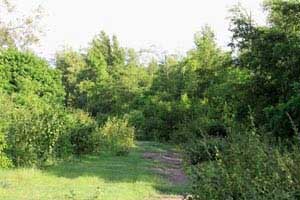
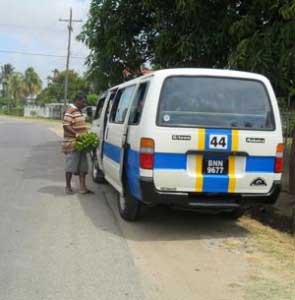

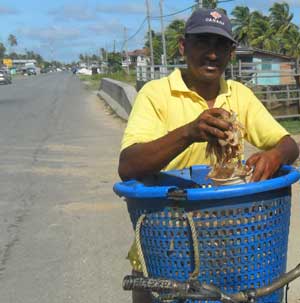
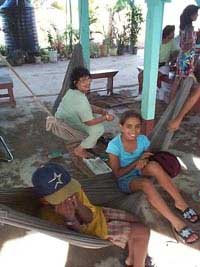
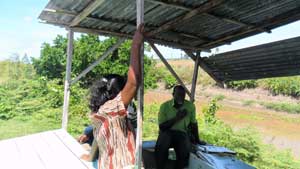
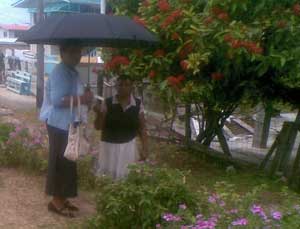
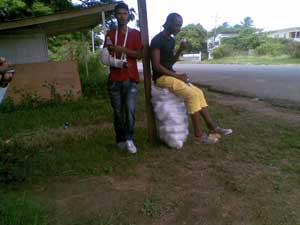
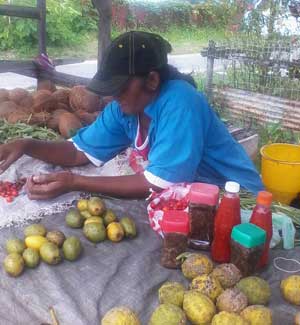
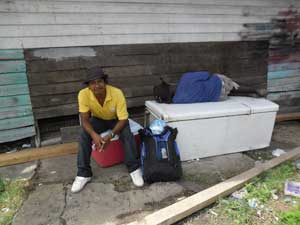



.jpg)



